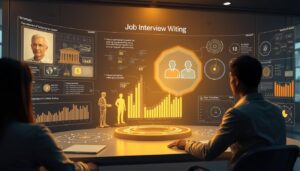The year 2025 is poised to be a pivotal year for the marketing, SaaS, and AI industries, with emerging technologies and evolving consumer behaviors driving significant transformations. As consumers continue to welcome AI into their daily activities, such as searching and shopping for products 1, the influence of AI is becoming increasingly pervasive across various sectors. To identify the key trends shaping these industries, we analyzed a variety of articles, reports, and industry publications discussing the future of marketing, SaaS, and AI in 2025. This article delves into the most impactful trends, providing a comprehensive overview of the forces that will redefine the business landscape in the years to come.

Marketing Trends in 2025
1. Hyper-Personalization Takes Center Stage
In 2025, personalization will transcend basic segmentation and move towards hyper-personalization, where brands leverage AI and data-driven insights to tailor experiences to individual customer needs and preferences. This shift is driven by the increasing demand for relevant and engaging experiences, with 90% of consumers finding personalized marketing appealing 2. Hyper-personalization can lead to significant benefits for businesses, including:
- Increased Engagement and Conversions: By delivering highly relevant content and offers, brands can capture customer attention and drive conversions more effectively.
- Improved Customer Loyalty: Personalized experiences foster a sense of value and connection, leading to increased customer satisfaction and loyalty.
- Reduced Customer Acquisition Costs: Tailored marketing campaigns can be more efficient in reaching the right audience, minimizing wasted spend and optimizing acquisition costs 3.
- Minimized Friction in Sales: Hyper-personalization can significantly reduce friction between customers and sales by providing timely and relevant information and offers 4.
Key Strategies for Hyper-Personalization:
- Leverage AI and Machine Learning: AI algorithms can analyze vast amounts of data to identify patterns and predict customer behavior, enabling highly targeted marketing campaigns 5.
- Focus on Data Privacy: As hyper-personalization relies on data, brands must prioritize ethical data collection and usage, ensuring transparency and consumer consent.
- Integrate Online and Offline Channels: Omnichannel strategies that connect online and offline touchpoints will be crucial for delivering a seamless and personalized customer journey 6.
2. Ethical Considerations in AI Marketing
As AI becomes more prevalent in marketing, ethical concerns regarding data privacy, bias, and manipulation require careful consideration. Responsible AI use in marketing necessitates a comprehensive approach that encompasses data privacy, transparency, and accountability.
- Data Privacy and Security: AI systems rely on vast amounts of data, raising concerns about consumer privacy and the potential for data breaches. Brands must implement robust data protection measures and ensure transparency in data usage 7.
- Bias and Discrimination: AI algorithms can perpetuate existing biases if trained on skewed data, leading to discriminatory outcomes. Marketers must actively identify and mitigate biases in AI systems and data sets to ensure fair and equitable treatment of all consumers 8.
- Transparency and Explainability: Consumers have the right to understand how AI is used in marketing and how it influences their experiences. Brands should be transparent about their AI-driven marketing initiatives and provide clear explanations of how AI is used 9. Building trust with customers requires clear communication about how AI is being used to enhance their experiences.
3. Generative AI Revolutionizes Content Creation
Generative AI is transforming content marketing by enabling marketers to create high-quality, personalized content at scale. This technology can be used for various applications, including:
- Content Ideation and Creation: AI can assist in generating ideas for blog posts, social media content, and marketing campaigns, as well as creating drafts and variations of content 10.
- Content Personalization: AI can tailor content to individual customer preferences, ensuring that each interaction is relevant and engaging. AI can analyze customer data and generate personalized product recommendations, email subject lines, or even entire landing pages tailored to specific customer segments.
- SEO Optimization: AI can analyze search trends and optimize content for better search engine rankings 11. AI-powered tools can analyze keywords, generate meta descriptions, and suggest content improvements to enhance search engine visibility.
Examples of Generative AI in Marketing:
- Heinz A.I. Ketchup: Heinz used generative AI to create a video ad that showcased the iconic design of its ketchup bottle 11.
- Octopus Energy: This UK-based energy supplier uses generative AI to personalize responses to customer emails 12.
- Mattel: Mattel utilizes AI in Hot Wheels product development to generate product concept images, inspiring new features and designs 13.
4. The Rise of “Faceless” Influencers
In 2025, the influencer marketing landscape will witness the rise of “faceless” content creators who share content without revealing their identities. This trend reflects growing concerns about digital privacy and the desire for authenticity 14. Faceless influencers offer several advantages:
- Focus on Content Quality: By obscuring their identities, faceless influencers shift the focus to the quality and value of their content rather than their personal brand.
- Increased Privacy: This approach allows creators to maintain their privacy while building an audience and engaging with followers.
- Versatility and Adaptability: Faceless influencers can experiment with different content styles and formats without being constrained by their personal image.
5. Direct Mail Makes a Comeback
While digital channels continue to dominate marketing strategies, direct mail is experiencing a resurgence in 2025. This traditional marketing method offers several benefits in the digital age:
- Tangibility and Personalization: Direct mail provides a physical connection with consumers, allowing for personalized messages and creative formats that stand out from digital clutter.
- Higher Response Rates: Direct mail boasts significantly higher response rates compared to email, making it an effective channel for driving conversions.
- Integration with Digital Channels: Direct mail can be integrated with digital campaigns to create a cohesive omnichannel experience, driving customers online and offline. For example, a direct mail piece can include a QR code that leads to a personalized landing page or online offer.
6. In-Store Experiences Grow in Prominence
While online shopping continues to be popular, in-store seasonal marketing campaigns and merchandising are becoming increasingly prominent in 2025 15. This trend is driven by a noticeable shift among younger generations, particularly Gen Alpha and Gen Z, who value physical interactions over digital ones 15. This desire for real-world experiences presents opportunities for brands to create engaging in-store activations that connect with consumers on a more personal level.
The increasing integration of AI in both marketing and SaaS solutions marks a significant shift in the business landscape. As AI continues to evolve, its influence will likely expand across various aspects of these industries.
SaaS Trends in 2025
1. AI-Powered SaaS Solutions Dominate
AI is rapidly becoming an integral part of the SaaS landscape, with AI-powered solutions offering enhanced functionality, personalized experiences, and improved efficiency. AI in SaaS offers benefits beyond automation, including scalability and cost efficiency, making it a profitable choice for businesses of any size 16. Key AI-driven SaaS trends include:
- Personalized User Experiences: AI algorithms analyze user behavior and preferences to tailor SaaS applications to individual needs, improving usability and satisfaction 17.
- Automated Processes: AI automates repetitive tasks, freeing up human resources for more strategic activities and improving overall efficiency 18.
- Predictive Analytics: AI-powered analytics provide insights into customer behavior, market trends, and business performance, enabling data-driven decision-making 19.
- Enhanced Cybersecurity: AI strengthens SaaS security by detecting and mitigating potential threats, protecting sensitive data and ensuring business continuity 20.
Examples of AI in SaaS:
- Shopify: Shopify uses AI to help merchants adjust prices automatically based on demand and competitor pricing 21.
- Salesforce Einstein: Salesforce’s AI platform provides predictive analytics, personalized recommendations, and automated workflows.
2. The Rise of Micro-SaaS
Micro-SaaS is a growing trend in the SaaS industry, characterized by small, niche products or services offered by solopreneurs or small teams 22. Micro-SaaS businesses offer several advantages:
- Low Investment Risk: Micro-SaaS ventures typically require minimal upfront investment and can be bootstrapped, reducing financial risk.
- High Profit Margins: With low overhead costs and targeted solutions, micro-SaaS businesses can achieve high profit margins 23.
- Location Independence: Micro-SaaS businesses can be operated from anywhere with an internet connection, offering flexibility and freedom.
Examples of Micro-SaaS:
- Carrd: A simple platform for building one-page websites.
- Nomad List: A curated database of cities for digital nomads.
- FindMyShift: A micro-SaaS company that helps allocate and manage labor resources 23.
3. Vertical SaaS Gains Momentum
Vertical SaaS solutions that cater to specific industries or niche markets are gaining traction in 2025. These specialized solutions offer tailored features and address unique pain points that generalized SaaS products may overlook 24. Vertical SaaS provides several benefits:
- Deeper Customer Engagement: By focusing on a specific vertical, SaaS companies can develop a deep understanding of their target audience’s needs and deliver highly relevant solutions.
- Increased Customer Lifetime Value: Tailored solutions foster customer loyalty and reduce churn, leading to increased customer lifetime value.
- Reduced Competition: Vertical SaaS businesses often face less competition compared to those operating in broader markets.
4. SaaS Security Takes Center Stage
With the increasing reliance on SaaS applications, security is becoming a top priority for businesses in 2025. Key SaaS security trends include:
- Zero Trust Security: This approach assumes that no user or device can be trusted by default and requires verification at every access point 25.
- Data Resiliency and Integrity: SaaS providers and users are prioritizing data protection measures to ensure data integrity and minimize the risk of data loss 26.
- Third-Party Backup Solutions: Businesses are increasingly adopting third-party backup solutions to protect their SaaS data and ensure business continuity 27.
5. Flexible Pricing Models Emerge
In 2025, SaaS companies are moving away from traditional subscription models and adopting more flexible pricing strategies to meet evolving customer needs. Key pricing trends include:
- Usage-Based Pricing: Customers pay only for the features or resources they use, reducing waste and optimizing costs 27.
- Dynamic Pricing: Prices adjust in response to market changes, competitor pricing, and demand fluctuations 27.
- Freemium Models: Basic access is offered for free, with premium features available at a cost, attracting a wider audience and driving upgrades 27.
6. The Growing Importance of Customer Success
In 2025, SaaS companies are placing a greater emphasis on customer success, recognizing that customer satisfaction and retention are crucial for long-term growth 28. This trend emphasizes the need for SaaS companies to prioritize customer relationships, provide ongoing support, and ensure that customers achieve their desired outcomes using the SaaS solution. Key strategies for customer success include:
- Connecting Business Goals to Customer Success Strategies: Aligning customer success initiatives with the overall business goals of the customer.
- Anticipating Customer Challenges: Proactively identifying and addressing potential challenges that customers may face.
- Providing Efficient Solutions: Offering timely and effective solutions to customer issues and inquiries.
- Improving Customer Onboarding: Providing a seamless and comprehensive onboarding experience to help customers get started with the SaaS solution.
- Providing Regular Product Updates: Keeping customers informed about new features, improvements, and updates to the SaaS product.
- Gathering Customer Feedback: Actively soliciting and incorporating customer feedback to improve the product and customer experience.
AI Trends in 2025
1. Agentic AI Takes the Lead
Agentic AI, characterized by autonomous decision-making and goal fulfillment, is emerging as a key trend in 2025 29. AI agents can perform complex tasks, adapt to changing environments, and interact with other agents or humans. Agentic AI differs from generative AI in its focus on autonomous decision-making and goal fulfillment 30. AI agents act as “marketing sidekicks,” assisting marketers with various tasks and providing valuable insights 31. Key applications of agentic AI include:
- Autonomous Vehicles: AI agents are used in self-driving cars to navigate roads, make decisions in real-time, and ensure passenger safety.
- Cybersecurity: AI agents can monitor network traffic, detect anomalies, and respond to cyber threats autonomously 32.
- Finance: AI agents are used in financial trading platforms to analyze market trends, execute trades, and manage investments 33.
Examples of Agentic AI:
- Bud Financial: This company uses agentic AI to provide personalized financial management solutions, such as preventing overdraft fees and optimizing interest rates 32.
- Darktrace: This cybersecurity company leverages agentic AI to monitor network traffic and detect complex cyber threats 32.
2. The Evolution of AI Models
In 2025, AI models are evolving to become more multimodal and specialized. Multimodal AI systems can process information from various input types, such as text, voice, image, video, and sensor data, within a single model 34. This enables AI applications to understand and reason across different modalities, leading to more comprehensive and nuanced insights.
Alongside multimodal AI, smaller and more specialized LLMs (Large Language Models) are becoming more common 34. These specialized LLMs can be fine-tuned for specific tasks or industries, enabling more accurate and efficient AI applications. This trend may lead to hyper-personalized models for organizations or even individuals in the future.
3. AI and the Future of Work
AI is transforming the workplace by automating tasks, augmenting human capabilities, and creating new job opportunities. As AI takes over routine tasks, the workforce needs to adapt by acquiring new skills and embracing collaboration with AI systems. Studies show that by 2030, 70% of the skills used in most jobs will change due to the increasing influence of AI 35. Key trends in AI and the future of work include:
- AI as a Workforce Partner: AI is increasingly seen as a tool to support and empower employees rather than replace them. AI can automate repetitive tasks, freeing up human workers to focus on more creative and strategic activities 36.
- Upskilling and Reskilling: As AI takes over routine tasks, employees need to acquire new skills and adapt to changing job roles. Businesses and governments are investing in upskilling and reskilling initiatives to prepare the workforce for the AI-powered future.
- Ethical Considerations: The ethical implications of AI in the workplace, such as job displacement and bias, require careful consideration and proactive measures to ensure fair and equitable outcomes.
4. AI for Sustainability
AI is playing a growing role in addressing environmental challenges and promoting sustainability. Key applications of AI for sustainability include:
- Climate Change Mitigation: AI can analyze climate data, predict extreme weather events, and optimize energy consumption to reduce greenhouse gas emissions.
- Resource Management: AI can optimize resource allocation, reduce waste, and improve efficiency in various sectors, such as agriculture, manufacturing, and transportation.
- Conservation Efforts: AI can monitor biodiversity, track endangered species, and combat illegal wildlife trafficking.
5. AI in Modeling and Managing Complex Systems
Generative AI is poised to deliver significant value to businesses in 2025 by enabling breakthroughs in the modeling and management of complex live systems 37. This has implications for various sectors, including transportation, logistics, smart cities, and security infrastructures. By integrating generative AI with technologies like digital twins, operational managers can gain deeper insights into real-time data streams, identify emerging issues, and make more informed decisions.
6. AI Regulation and Governance
As AI becomes more pervasive, governments and organizations are developing regulations and guidelines to ensure responsible AI development and deployment. Key areas of focus include:
- Data Privacy and Security: Regulations are being implemented to protect consumer data and prevent misuse of AI systems.
- Bias and Discrimination: Guidelines are being developed to address bias in AI algorithms and ensure fair and equitable outcomes.
- Transparency and Explainability: Regulations are promoting transparency in AI decision-making processes and requiring explanations for AI-driven outcomes.
Conclusion: Navigating the Future of Marketing, SaaS, and AI
The trends outlined in this article highlight the transformative forces shaping the marketing, SaaS, and AI industries in 2025. By understanding these trends and their implications, businesses can proactively adapt their strategies, embrace innovation, and thrive in the evolving digital landscape.
These trends are not isolated but interconnected, with the rise of AI as a unifying force influencing both marketing and SaaS. AI is revolutionizing marketing through hyper-personalization and generative content creation, while also driving innovation in SaaS through intelligent automation, personalized user experiences, and enhanced security. These trends are shaping consumer behavior and expectations, leading to a demand for more personalized, efficient, and ethical solutions.
As AI continues to evolve, ethical considerations become increasingly important. Businesses must prioritize responsible AI development and deployment, ensuring data privacy, fairness, and transparency. By embracing ethical AI practices, businesses can build trust with customers, mitigate risks, and contribute to a more equitable and sustainable future.
In conclusion, navigating the future of marketing, SaaS, and AI requires a proactive and holistic approach. Businesses must stay informed about emerging trends, adapt their strategies, and prioritize ethical considerations to succeed in this dynamic landscape. By embracing innovation and responsibility, businesses can harness the power of these trends to achieve sustainable growth, enhance customer experiences, and create a more innovative and responsible future.
Want to hire me as a Consultant? Head to Channel as a Service and book a meeting.



